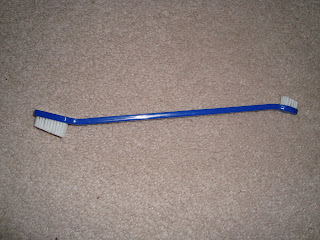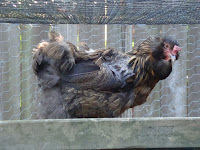If you have picture windows in your house, you may have heard the particular t
hud of a bird hitting the window. The sound is so sharp and quick that it can leave you wondering if you heard anything at all. To ward off reckless fliers, people sometimes put decals of crows or other shapes on large windows or sliding glass doors. My house has white, horizontal blinds on the windows. I keep them open to let in the light but lowered so that the windows don’t look like an empty expanse to birds.
At least I thought the blinds looked like a barrier until today when I heard the ominous
thunk followed by the barking of two Airedales. Sometimes a bird is stunned and best left alone to recover. Today’s bird, a juvenile goldfinch, was not so lucky.
 |
| Juveniles have duller coloring than adults as well as a dark upper beak. |
Although the goldfinch is the Washington state bird, we don’t often see them anymore. The population of songbirds has declined drastically everywhere. Reasons normally include habitat loss, acid rain, climate change, even predation by household cats, though a
recent study in the UK supports habitat loss as the main reason.
I went outside to the front porch to find the bird dead of a broken neck below the window-box nasturtiums, one eye closed and the other beginning to dull. Most birds around here sport variations in shades of brown; to find some golden coloring is like finding real gold. I took photos to remember the colors and when examining the markings on the bird’s wing, discovered the flight feathers are so delicate as to be translucent.
This is the time of year when birds, opossums, spiders and other wildlife leave their families to search for their own territory. That’s why we find more of them on our front porches and in the roads.
Early in the summer I mentioned the low odds of any bird surviving to reproduce. How important is one tiny goldfinch?

















































